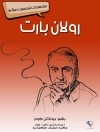An investigation into how soldiers of this period considered and presented themselves.
Within the large-scale historiography of sixteenth- and seventeenth-century warfare and the early modern military revolution there remain many unanswered questions about the individual soldier and their relationship to the profession of arms. What was it that distinguished a soldier from the rest of society? How was the military life perceived in this period by those with first-hand experience of soldiery, or who represented soldiers on the page and stage?How were nationality, class, and gender used to construct military identities? And how were such identities also shaped by classical and medieval models?
This book examines how early modern fighting men and their peers viewed and represented themselves in military roles, and how they were viewed and fashioned by others. Focusing on English, Irish and Anglo-Irish soldiers active between the 1560s and 1630s, and using sources including poetry, petitions, sermons, military treatises and manuals, campaign records, and plays by Shakespeare, Middleton and their contemporaries, a combination of historians and literary scholars offer new investigations into the construction, representation and interpretation of military identity, and consider the personal and political implications of martial self-fashioning. Drawing on a variety of disciplines and methodologies, the essays here demonstrate how the study of military identity-and military identities-intersects with that of life-writing, digital humanities, gender, disability, the history of emotions, and the relationship between early modern literature and martial culture.
MATTHEW WOODCOCK is Professor of Medieval and Early Modern Literature, University of East Anglia; CIAN O’MAHONY is an Independent Scholar.
Contributors: Angela Andreani, Benjamin Armintor, Ruth Canning, David Edwards, Andrew Hadfield, Andrew Hiscock, Adam Mc Keown, Philip Major, Cian O’Mahony, James O’Neill, Vimala Pasupathi, Clodagh Tait, David Trim, Matthew Woodcock.
Tabela de Conteúdo
Introduction
‘Warlike prowesse and manly courage’: Martial Conduct and Masculine Identity in Late Tudor and Early Stuart England – David Trim
‘The Breviarie of Soldiers’: Julius Caesar’s
Commentaries and the Fashioning of Early Modern Military Identity – Matthew Woodcock
‘Souldiers or Clarkes or both’: Ralph Knevet and the Fashioning of Military Identity through Print and Performance in Caroline Norwich – Cian O’Mahony
Thomas, First Lord Fairfax and ‘The Highway to Heidelberg’ – Philip Major
The Clergy and the Military in Early Modern Ireland – Angela Andreani and Andrew Hadfield
‘Trust, Desert, Power and skill to serve’: The Old English and Military Identities in Late Elizabethan Ireland – Ruth Canning
Artifice in
Ormonius: Why a Renaissance Latin Epic Falsified the Military History of a Tudor Irish General – David Edwards
Irish Savage and English Butcher: Military Identities and Tyrone’s Rebellion, 1593-1603 – James O’Neill
‘A print in my body of this day’s service’: Finding Meaning in Wounding During and After the Nine Years War – Clodagh Tait
Othello and the Braggart Soldier in the Context of Elizabethan War Veterans – Adam Mc Keown
‘Lay by thine Arms and take the Citie then’: Soldiery and City in the Drama of Thomas Middleton – Samuel Rogers / Reviews
‘Sometimes a figure, sometimes a cipher’: Dramatic Assertions of Martial Identity, 1580-1642 – Benjamin Armintor
‘Sometimes a figure, sometimes a cipher’: Dramatic Assertions of Martial Identity, 1580-1642 – Vimala Pasupathi
Afterword: The Way Ahead
Bibliography












